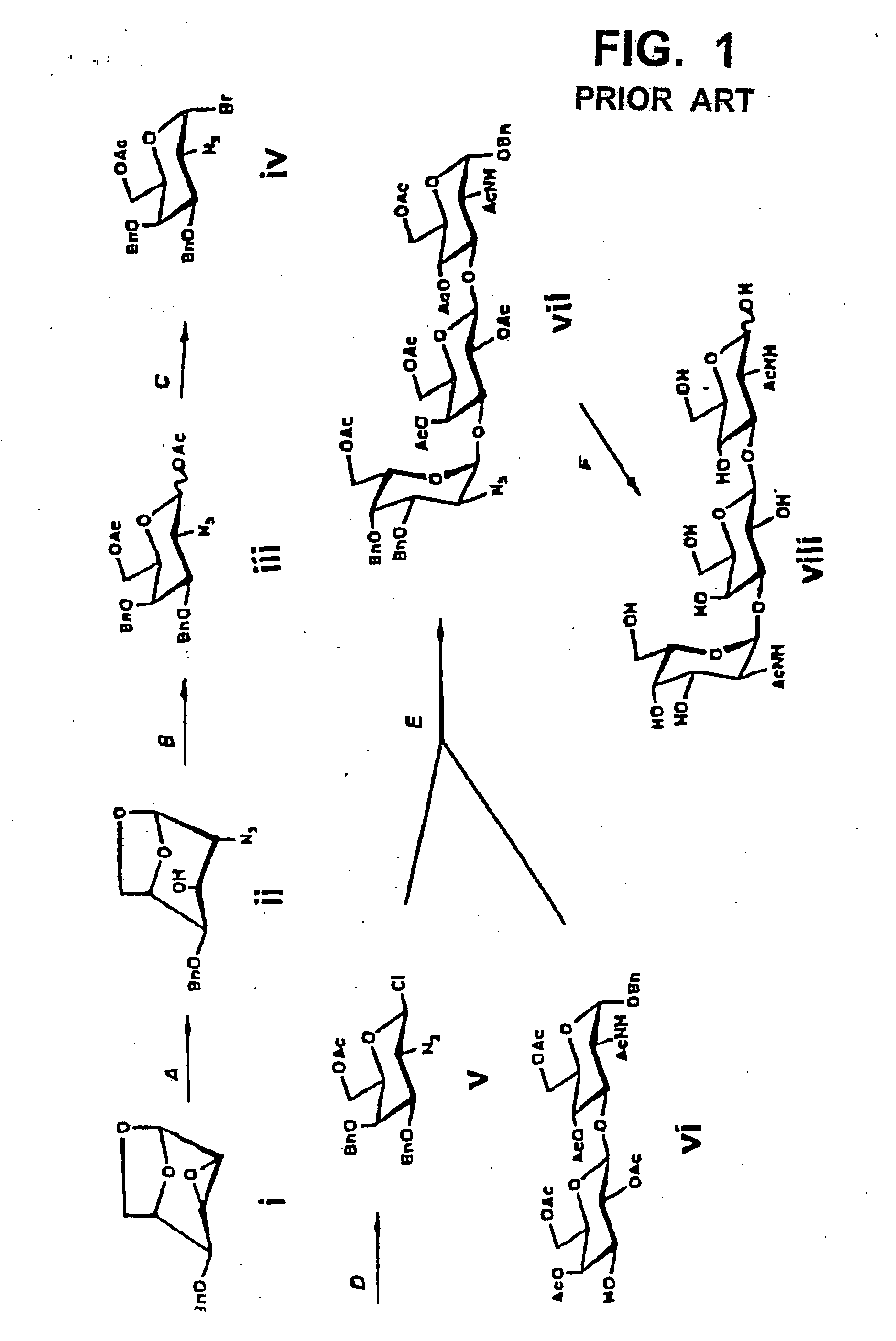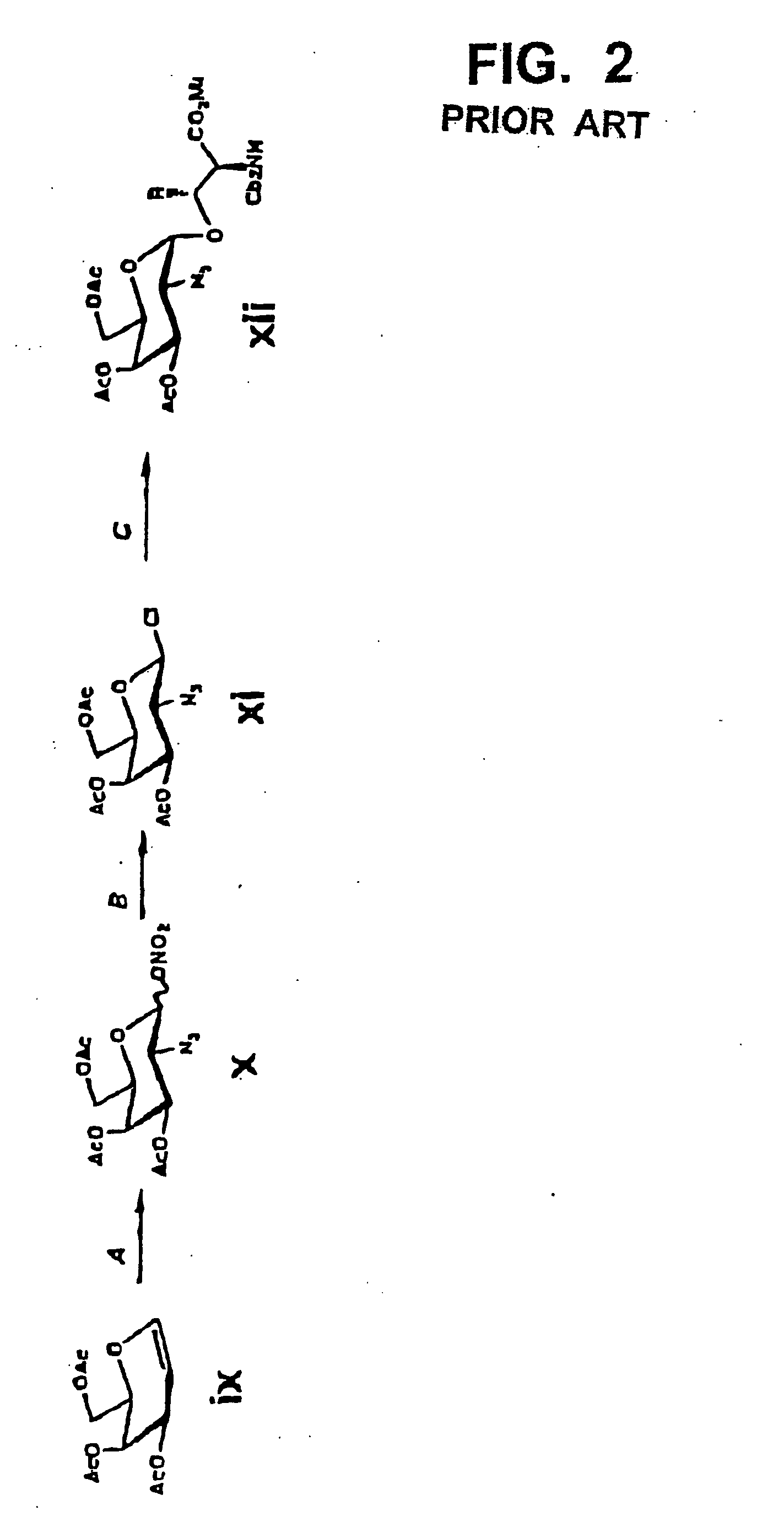Method of alpha-selective glycosylation
- Summary
- Abstract
- Description
- Claims
- Application Information
AI Technical Summary
Benefits of technology
Problems solved by technology
Method used
Image
Examples
embodiments
[0053] Examples of the invention are described below. These Examples never limit the technical scope of the invention.
example 1
Synthesis of Acceptor Compound
[0054] First, the carboxyl group in a sialic acid dimer of the following chemical formula 1 as obtained from colominic acid was prepared into methyl ester, to obtain a sialic acid dimer represented by the following chemical formula 2. In that case, the carboxyl group at its non-reducing end was allowed to form lactone together with the hydroxyl group at position 8 at the reducing end. Further, the acetyl group at the anomeric position in the sialic acid dimer represented by the chemical formula 2 was converted to phenylthio group (SPh group), to obtain disialyl galactose represented by the following chemical formula 3. In the chemical formulas 1 through 3, herein, “Ac” means acetyl group and “Sph” means phenylthio group.
[0055] Then, galactose modified with a protective group as shown in the following chemical formula 4 was separately prepared. In the chemical formula 4, “Bn” means benzyl group and “SE” means 2-(trimethylsilyl)ethyl group.
[0056] Sub...
example 2
Synthesis of Sugar Structure
[0058] First, a galactosamine triol derivative represented by the following chemical formula 6 was prepared by a predetermined synthetic process, where the hydroxyl group at position 1 was protected with Sph group and the amino group at position 2 was protected with Troc group. The galactosamine triol derivative has the “4C1” pyranoside structure.
[0059] Using DTBS (OTf)2 with trifluoromethanesulfonic acid as an elimination group attached to di-t-butylsilane, then, DTBS was introduced into the positions 4 and 6 in the compound represented by the chemical formula 6 under predetermined reaction conditions, to obtain a compound of the following chemical formula 7, having the protective group in the silyl acetal structure at the positions 4 and 6.
[0060] Further, TrocC1 reacted with the compound represented by the chemical formula 7 in a pyridine solvent, to obtain a compound represented by the following chemical formula 8, where Troc group was introduced at...
PUM
| Property | Measurement | Unit |
|---|---|---|
| Fraction | aaaaa | aaaaa |
| Electric charge | aaaaa | aaaaa |
| Structure | aaaaa | aaaaa |
Abstract
Description
Claims
Application Information
 Login to View More
Login to View More - R&D
- Intellectual Property
- Life Sciences
- Materials
- Tech Scout
- Unparalleled Data Quality
- Higher Quality Content
- 60% Fewer Hallucinations
Browse by: Latest US Patents, China's latest patents, Technical Efficacy Thesaurus, Application Domain, Technology Topic, Popular Technical Reports.
© 2025 PatSnap. All rights reserved.Legal|Privacy policy|Modern Slavery Act Transparency Statement|Sitemap|About US| Contact US: help@patsnap.com



